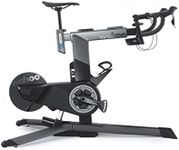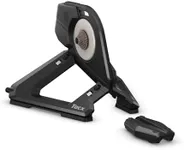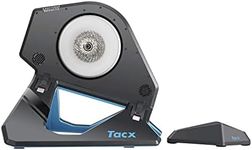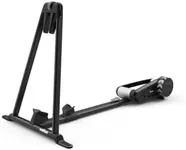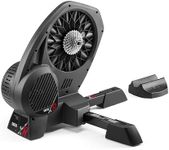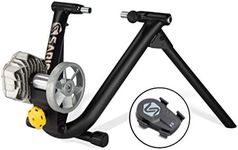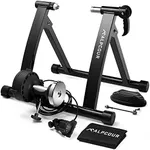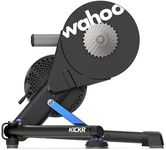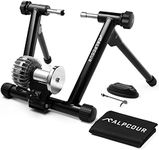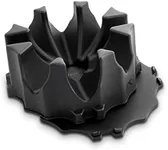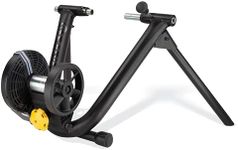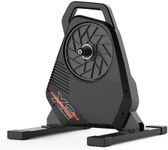Buying Guide for the Best Cycling Smart Trainers
Choosing the right cycling smart trainer can significantly enhance your indoor training experience. A smart trainer provides resistance that can be controlled by software, simulating real-world riding conditions. When selecting a smart trainer, it's important to consider several key specifications to ensure it meets your training needs and preferences. Understanding these specs will help you make an informed decision and get the most out of your investment.Resistance TypeThe resistance type in a smart trainer determines how the trainer simulates different riding conditions. There are generally two types: magnetic and fluid. Magnetic trainers use magnets to create resistance, which can be adjusted electronically. Fluid trainers use a hydraulic fluid to create resistance, which increases as you pedal faster. Magnetic trainers are often quieter and offer more precise control, while fluid trainers provide a more realistic road feel. Choose magnetic if you want precise control and quieter operation, and fluid if you prefer a more natural riding experience.
Power AccuracyPower accuracy refers to how accurately the trainer measures your power output, usually expressed as a percentage. This is crucial for serious training as it ensures the data you are working with is reliable. Power accuracy typically ranges from ±1% to ±5%. For competitive cyclists or those following structured training plans, a higher accuracy (closer to ±1%) is preferable. For casual riders, a slightly lower accuracy may be acceptable. Consider your training goals to determine the level of accuracy you need.
ConnectivityConnectivity options determine how the smart trainer interacts with other devices and software. Common connectivity options include ANT+ and Bluetooth. These allow the trainer to connect to apps like Zwift, TrainerRoad, and others, as well as to heart rate monitors and other sensors. Ensure the trainer you choose supports the connectivity options you need for your preferred training apps and devices. If you plan to use multiple devices or apps, look for trainers with both ANT+ and Bluetooth capabilities.
Noise LevelNoise level is an important consideration, especially if you live in an apartment or train early in the morning or late at night. Trainers can vary significantly in how much noise they produce. Direct-drive trainers tend to be quieter than wheel-on trainers. If noise is a concern, look for trainers specifically marketed as quiet or with noise levels measured in decibels (dB). A quieter trainer will make your indoor training sessions more pleasant and less disruptive to others.
CompatibilityCompatibility refers to whether the smart trainer can accommodate your bike's specifications, such as wheel size, axle type, and drivetrain. Most trainers are compatible with a wide range of bikes, but it's important to check the specifications to ensure a proper fit. Some trainers come with adapters for different axle types and wheel sizes. Make sure the trainer you choose is compatible with your bike to avoid any issues during setup.
Maximum ResistanceMaximum resistance indicates the highest level of resistance the trainer can provide, usually measured in watts. This is important for simulating steep climbs and for high-intensity interval training. Trainers typically offer maximum resistance levels ranging from 1,000 to 2,200 watts. If you are a strong rider or plan to do a lot of high-intensity training, look for a trainer with a higher maximum resistance. For general fitness and moderate training, a lower maximum resistance may be sufficient.
Flywheel WeightThe flywheel weight affects the ride feel and inertia of the trainer. A heavier flywheel provides a smoother and more realistic road feel by maintaining momentum better. Flywheel weights can range from around 4 kg to over 10 kg. If you want a more realistic and smooth riding experience, opt for a trainer with a heavier flywheel. For casual training, a lighter flywheel may be adequate.
